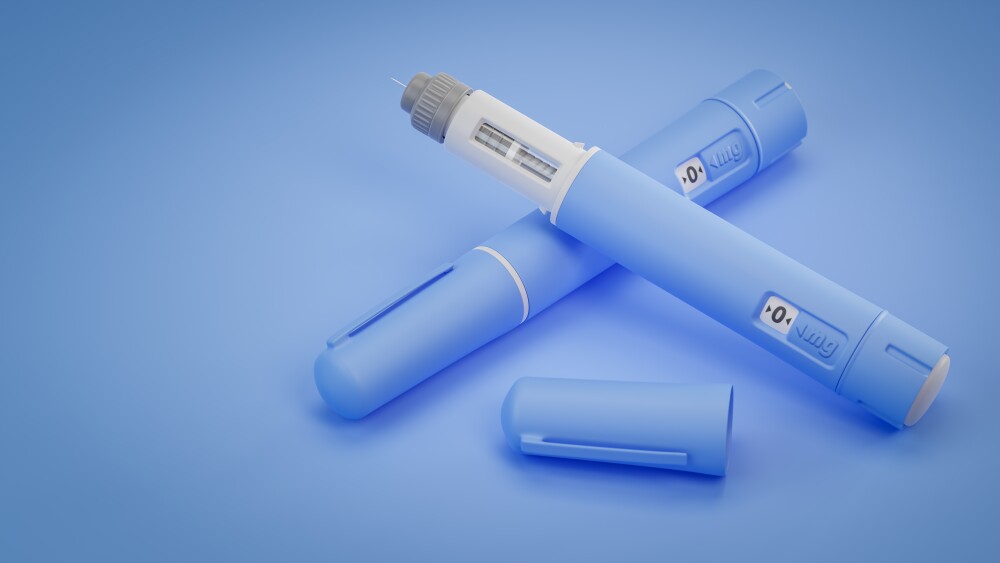Metabolic signatures in the blood of children with autism spectrum disorder (ASD) may lead to earlier diagnosis of the condition for some children, according to newly published research
MADISON, Wis.--(BUSINESS WIRE)-- Metabolic signatures in the blood of children with autism spectrum disorder (ASD) may lead to earlier diagnosis of the condition for some children, according to newly published research. These biochemical signatures provide insight into how the body metabolizes certain amino acids important to typical neurodevelopment. Children with these metabolic signatures are placed into metabolic subtypes, or metabotypes, that are highly associated with an ASD diagnosis.
The new findings appear online today in Biological Psychiatry in a publication entitled “Amino acid dysregulation metabotypes: potential biomarkers for diagnosis and individualized treatment for subtypes of autism spectrum disorder.” David G. Amaral, Ph.D., of the University of California – Davis MIND Institute, and scientists from NeuroPointDX, a division of Stemina Biomarker Discovery, Inc., of Madison, Wisconsin, authored the publication, which is the first resulting from the Children’s Autism Metabolome Project (CAMP), the largest study of the metabolism of children with ASD.
Autism spectrum disorder is made up of a diverse set of neurodevelopmental disorders that arise from differences in underlying genetic, metabolic, and environmental factors, resulting in a spectrum of cognitive, behavioral, and biological profiles. ASD is marked by communication, behavioral, and social difficulties. No reliable, objective biomarkers have existed to aid in the diagnosis of ASD, which is currently diagnosed based on the behavioral characteristics exhibited by an affected child.
While a diagnosis is possible in children as young as 24 months, the average age of ASD diagnosis in the United States is over four years. Early diagnosis is important because intensive behavioral therapy has been shown to improve the symptoms of autism; the benefit of such intervention is greater the earlier it is started.
“Using a metabolomics approach to detect ASD risk holds substantial promise for the identification of objective ASD biomarkers because metabolism is sensitive to interactions among the genome, gastrointestinal microbiome, diet, and environmental factors that all contribute to an individual’s unique metabolic signature,” said Elizabeth Donley, NeuroPointDX Chief Executive Officer, a co-author of the publication. “Metabolic testing can provide important biochemical signatures that help identify disruptions in biological processes that underlie an individual’s ASD.”
Past studies have been too small to reliably detect these metabolic dysregulations and characterize them into metabotypes. To test for metabolic imbalances that could reveal metabotypes and potential diagnostic biomarkers of ASD, the researchers conducted CAMP, a large-scale, eight-site study that recruited 1,100 children (ages 18 months to 48 months) with clinically confirmed ASD, developmental delay, or typical development. Prior research by this team and others, as well as preliminary analysis of the CAMP samples, suggested analysis of amino acid dysregulation might be a useful approach to identifying unique metabotypes with potential to serve as objective biomarkers of ASD.
When scientists at NeuroPointDX compared plasma metabolites from 516 children with ASD with those from 164 age-matched, typically developing children from the CAMP study, they were able to stratify the ASD children into subpopulations based on shared metabolic signatures. Imbalances in glutamine, glycine, and ornithine with lowered branched chain amino acids (BCAA: leucine, isoleucine, and valine) identified three ASD-associated Amino Acid Dysregulation Metabotypes (AADM). These three AADMs together were present in 16.7% of the CAMP ASD subjects and were detectable with a specificity of 96.3% and an accuracy (PPV) of 93.5%.
“It is unlikely that a single marker will detect all autism,” said lead author Dr. Amaral. “This paper demonstrates that alterations in metabolic profiles can detect sizable subsets of individuals with autism. The hope is that we will be able to generate a panel of biomarkers that will detect a large proportion of people at risk. Moreover, this approach highlights metabolic pathways that may be targets for therapeutic intervention.
“One of the major goals of the MIND Institute is the development of early biological markers for detecting the risk of autism spectrum disorder,” Dr. Amaral continued. “It would have been difficult for the MIND Institute to carry out the CAMP study on its own. CAMP is an excellent example of an academic/corporate partnership that has the promise of benefitting the autism community.”
“A reliable set of biological markers to detect increased risk for autism would improve accurate identification and reduce the impact on people with the condition,” said Thomas W. Frazier, Ph.D., Chief Scientific Officer of Autism Speaks, who was not involved in the study. “The metabolomics approach in this paper reflects a rational approach not only to detection but also to developing targeted treatments.”
“One of the critical and currently unmet clinical and research needs in the field of autism is a reliable early biological marker,” said Geraldine Dawson, PhD, FAPA, FAPS, Professor of Psychiatry and Behavioral Sciences and Director, Duke Center for Autism and Brain Development, Duke Institute for Brain Sciences, who was not involved in the study. “The sooner families can receive information that their child is at high risk for autism, the sooner they can begin effective behavioral or other therapies. The research in this paper is an important milestone towards establishing metabolomics biomarkers of autism.”
NeuroPointDX continues to analyze the CAMP study samples to identify additional metabotypes that will be diagnostic for other subsets of children with ASD. By combining such ASD-associated metabotypes into a diagnostic panel, it should be possible to develop an objective blood test that enables a substantial percentage of children at risk for ASD to be identified at a very early age, when therapeutic intervention can provide the greatest benefit.
Funding for the CAMP study was provided by a grant from the National Institutes of Mental Health, the Nancy Lurie Marks Family Foundation, and the Robert E. and Donna Landreth Family Fund.
About NeuroPointDX and its parent company, Stemina Biomarker Discovery
NeuroPointDX is a division of Stemina Biomarker Discovery, which was founded in 2007 and is located in Madison, Wisconsin. Stemina operates its business in two divisions: NeuroPointDX, focused on diagnosis and more precise treatment of neurological disorders; and Stemina, focused on screening chemicals and compounds for their potential to cause birth defects if a woman is exposed during pregnancy.
Visit NeuroPointDX at http://neuropointdx.com
Visit Stemina at http://www.stemina.com
View source version on businesswire.com: https://www.businesswire.com/news/home/20180906005069/en/
Contacts
NeuroPointDX & Stemina Biomarker Discovery
Elizabeth Donley, 608-577-9209
CEO
info@neuropointdx.com
Or
For Media:
Bioscribe, Inc.
Nicole Litchfield, 415-793-6468
nicole@bioscribe.com
Or
Joan Kureczka, 415-821-2413
Joan@bioscribe.com
Source: Stemina Biomarker Discovery





